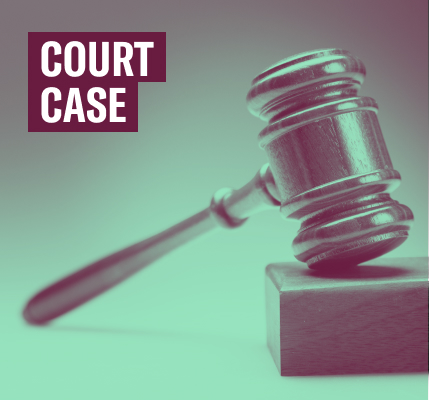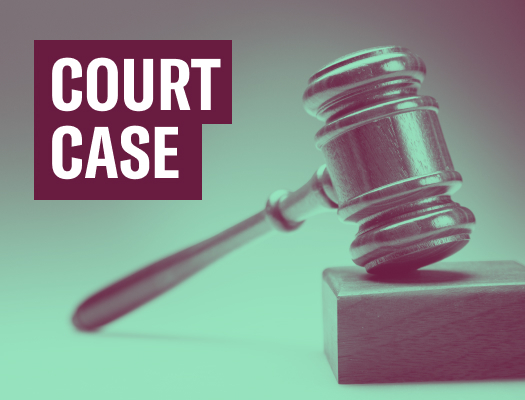What did the U.S. Supreme Court decide in Gonzales v. Carhart and Gonzales v. Planned Parenthood Federation of America (a single decision referred to as Carhart II)?
On April 18, 2007, the United States Supreme Court dealt a devastating blow to women’s health, reproductive rights, and equality. In a 5-4 decision that puts politics before women’s health, the Court upheld the first-ever federal ban on abortion methods – called by its sponsors the “Partial-Birth Abortion Ban Act of 2003.” The Court upheld the ban despite the fact that it fails to contain any exception to protect women’s health.
Was this the first time the Court upheld an abortion restriction that failed to include protections for women’s health?
Yes. In the three decades since Roe v. Wade, the Court has always demanded that abortion restrictions include protections for women’s health. Yet the Court upheld the federal ban despite the fact that it does not contain a health exception – an exception that leading physicians and medical organizations testified is critical to protecting women’s health and safety.
On what grounds did the Court uphold the ban?
For the first time in more than 30 years, the Court turned its back on the bedrock principle that abortion restrictions cannot endanger women’s health. Instead, the Court ruled that the “State’s interest in promoting respect for human life at all stages of pregnancy” could outweigh a woman’s interest in protecting her own health.
Furthermore, the Court held that in the face of “medical uncertainty” lawmakers could overrule a doctor’s medical judgment. In other words, the Court sanctioned placing medical decisions in the hands of politicians, not doctors.
What did Justice Ginsburg argue in her dissent?
In an impassioned dissent, Justice Ruth Bader Ginsburg strongly criticized the majority for placing women’s health at risk and for undermining women’s struggle for equality. She called the decision “alarming” and argued that the “Court offers flimsy and transparent justifications for upholding [the ban].” Notably, her dissent underscores the importance of reproductive freedom in women’s lives, noting that women’s “ability to realize their full potential . . . is intimately connected to ‘their ability to control their reproductive lives.’” With this decision, she lamented, “[T]he Court deprives women of the right to make an autonomous choice, even at the expense of their safety.”
Does this decision affect the right to abortion, established in Roe v. Wade?
While the Carhart II decision does not overturn Roe v. Wade, it undermines a core principle – that women’s health must remain paramount. In so doing, it sets a dangerous precedent and invites politicians to pass new and far-reaching abortion restrictions that further threaten women’s health.
Does this decision overturn Stenberg v. Carhart, a nearly identical case decided only seven years prior?
Notwithstanding the Court’s claim that it merely followed precedent in this case, the Court’s ruling in Carhart II stands in stark contrast to one it made only seven years prior in a nearly identical case, Stenberg v. Carhart (Carhart I).
In Carhart I, the Court struck down a state ban on abortion methods and sent a strong message affirming that women’s health must remain paramount. Justice Sandra Day O’Connor played a pivotal role in Carhart I, providing the fifth vote to strike down the dangerous and far-reaching state ban. The Carhart II decision is the first abortion decision by the Court since Justice O’Connor’s retirement.
What does this decision tell us about the Roberts Court and the right to abortion?
In Carhart II, the Roberts Court refused to reaffirm that Roe v. Wade remains the law of the land. As Justice Ginsburg notes in her dissent, “the Act, and the Court’s defense of it, cannot be understood as anything other than an effort to chip away at a right declared again and again by the Court – and with increasing comprehension of its centrality to women’s lives.”
What kinds of abortion restrictions will states pass as a result of this decision?
The Court’s decision in Carhart II invites politicians across the country to pass new and far-reaching restrictions on abortion regardless of their impact on women’s health. We must remain vigilant in our efforts to protect the right to abortion and increase women’s access to the full range of reproductive health care.
Following the decision, national advocates for women’s reproductive health immediately joined forces and called upon Congress to pass the Freedom of Choice Act, a measure aimed at restoring a woman’s ability to make personal medical decisions free from government interference. Likewise, state advocates are working to shore up state level protections and to fight new anti-abortion measures. For example, in New York, advocates worked with Gov. Eliot Spitzer to introduce a bill to create an affirmative right to abortion, contraception, and other family planning services in that state.
Will women still be able to get abortions in the second trimester of pregnancy?
Yes. While Carhart II puts medical decisions in the hands of politicians, not doctors, it does not prevent doctors from performing second-trimester abortions. Instead, Carhart II dangerously interferes with medical decision making, forcing doctors to change the way they practice medicine based on politics, not medicine or women’s health care needs.
Can this ban be enforced in all 50 states?
Yes. This is a federal law that can be enforced in all 50 states.
What is the federal ban on abortion methods?
Numerous doctors, including many from leading teaching hospitals across the country, testified that the ban prohibits a range of abortion methods used as early as 13 weeks in pregnancy, methods that they know to be safe and among the best to protect their patients’ health. While the Supreme Court’s decision in Carhart II suggests that the ban is narrowly targeted to prohibit one method, it provides doctors with scant guidance about what might subject them to criminal and civil liability under the ban. Consequently, doctors will be forced to change how they treat patients based on politics and not on their best medical judgment.
Who challenged the federal ban?
When Congress passed and President Bush signed the ban into law in the fall of 2003, three legal challenges were immediately filed.
- The National Abortion Federation and seven individual physicians, represented by the American Civil Liberties Union, Wilmer Cutler Pickering Hale and Dorr LLP, the ACLU of Illinois, and the New York Civil Liberties Union, filed a legal challenge to the federal ban in the U.S. District Court for the Southern District of New York. (National Abortion Federation v. Gonzales)
- Dr. LeRoy Carhart and three other physicians, represented by the Center for Reproductive Rights, filed a legal challenge to the federal ban in the U.S. District Court for the District of Nebraska. (Gonzales v. Carhart)
- On behalf of its affiliates throughout the country, Planned Parenthood Federation of America and Planned Parenthood of Golden Gate filed a legal challenge to the federal ban in the U.S. District Court for the Northern District of California. (Gonzales v. Planned Parenthood Federation of America)
The trial and appellate courts in all three cases struck down the ban in part because it endangers women’s health. On November 8, 2006, the U.S. Supreme Court heard argument in two of the cases, Gonzales v. Carhart and Gonzales v. Planned Parenthood Federation of America, while National Abortion Federation v. Gonzales remained on hold in the U.S. Court of Appeals for the Second Circuit. The U.S. Supreme Court issued its decision upholding the ban on April 18, 2007. This decision marks the first-time that a nationwide law banning certain abortion methods will be allowed to take effect.

